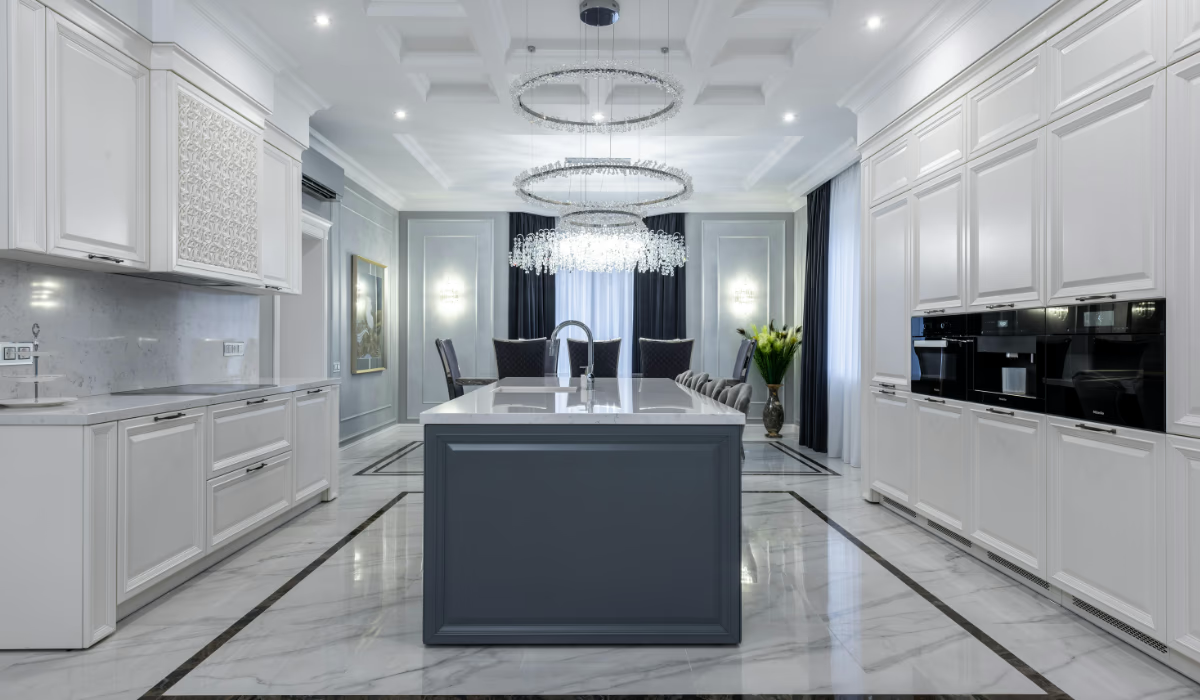A ceiling is far more than just the overhead plane of a room—it’s an opportunity to add character, style, and architectural interest. Whether you’re revamping your living room or planning a full redesign, good ceiling design can elevate the space. In this article, you’ll find creative ideas, practical tips, and inspiring decor suggestions to make your ceiling a standout feature.
Why Focusing on Your Ceiling Matters
The ceiling is often the last area people think about, yet it plays a major role in the way a room feels. It helps define the room’s proportions, affects lighting distribution, and contributes significantly to the overall ambiance. Whether it’s flat, vaulted, beamed, or coffered, the design of the ceiling can complement or clash with the rest of your décor.
Ignoring ceiling design means missing an opportunity to create cohesion and visual interest. A well-designed ceiling draws the eye upward, balances the room, and can make spaces feel taller, cozier, or more dynamic depending on the treatment.
Key Elements of Good Ceiling Design
When you plan your ceiling décor, several elements should guide your decisions. Materials, shapes, textures, and lighting all work together to enhance or diminish the impact.
Material and Texture Choices
Materials like wood, plaster, exposed beams, or decorative molding each carry a distinct style. Wood adds warmth and rustic charm; exposed beams bring a cozier or chalet-like feel; molding and plaster offer elegant detail. Mixing textures—for example combining wood beams with smooth plaster or glass accents—adds depth and visual interest without overwhelming the room.
Paint, Color, and Contrast
Color can dramatically change the perception of ceiling height and room atmosphere. Light, neutral shades help ceilings feel higher; darker colors make ceilings feel lower but can add drama in rooms with ample height. Painted beams or contrasting ceiling paint can define architectural features. Even doing the ceiling and trim in one tone can create a seamless look.
Architectural Details and Shape
Shapes like tray ceilings, vaulted or cathedral ceilings, coffered ceilings, or slanted/sloped designs introduce architectural drama. These shapes often create natural shadows or highlight lines that make a ceiling more than just flat. Added details like ceiling medallions, beams, or recessed panels further emphasize shape and structure.
Ceiling Design Ideas for Different Styles
Here are ceiling ideas suited to different living room styles, so you can match design to your personal taste and home’s character.
Rustic, Farmhouse & Cottage Styles
Use natural wooden beams, shiplap panels, or exposed trusses to bring in rustic texture. A light wooden ceiling can warm up the room without making it feel heavy. Pair with neutral walls and soft lighting for balance.
Modern & Minimalist Styles
Opt for clean, flat ceilings with subtle molding or hidden LED lighting. Monochromatic paint or minimal contrast keeps the look sleek. Simple tray or coffered ceilings with defined lines work well without being too ornate.
Eclectic & Bold Styles
If you love patterns and strong design statements, try wallpaper or painted patterns on the ceiling. Glossy plaster finishes or metallic touches (gold or brass) make ceilings shine. Even pairing bold beams or trim with contrasting ceiling colors gives a dramatic flair.
Practical Tips for Living Room Ceiling Design
When implementing any ceiling idea, keep these practical points in mind so design looks good and performs well.
- Ensure ceiling height is sufficient for any architectural or decorative addition (beams, tray ceilings) so the room doesn’t feel cramped.
- Choose lighting fixtures that complement the ceiling style—pendants, chandeliers, or recessed lighting should fit proportionally.
- Consider materials and finishes that are easy to maintain; e.g. painted surfaces, materials that resist moisture if needed.
- Plan for acoustics: some materials (wood, textured surfaces) can help absorb sound, reducing echoes in large open living rooms.
Mistakes to Avoid
Even with great ideas, certain missteps can reduce the impact of a ceiling design.
- Overloading ornate detail in low-ceiling rooms. Ornate moldings or beams look better when there is room for them.
- Using dark, heavy colors in rooms without enough natural or artificial light—it can make the ceiling feel oppressive.
- Ignoring scale: large ceiling medallions or oversized fixtures can look out of place in modest living rooms.
- Forgetting consistency: mismatched textures, clashing trim or moldings can break the visual harmony of a ceiling and its surroundings.
Conclusion
A ceiling is more than a backdrop—it’s an integral design element that should be intentional. By using thoughtful materials, paying attention to shape and proportion, incorporating well-chosen lighting, and avoiding common design mistakes, your ceiling can become a signature feature in your living room. With these ceiling design ideas, you can create spaces that feel both beautiful and balanced.
FAQs
What ceiling design is best for a small living room?
Tray ceilings or simple painted ceilings in light, neutral colors help small rooms feel taller without added bulk.
Can bold ceiling colors work in a living room?
Yes—as long as there’s enough light and the ceiling height allows it. Contrasting colors or accent beams can offer dramatic effect.
How do I choose between beams vs. molding or plaster?
Think about style, maintenance, and room architecture. Beams add warmth and scale, molding/plaster gives elegance. Choose based on your desired style and room’s structural possibilities.
Do ceiling textures or patterns affect lighting?
They do. Textured surfaces scatter light, which can soften harsh lighting, while gloss or reflective materials amplify light. Choose each based on how you want your room to feel.







